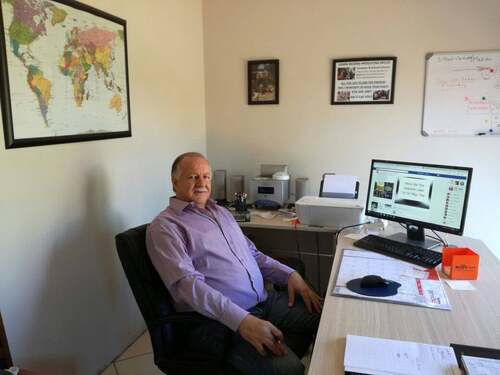Build Solo, Scale Smart: How I Launched a Lean, High-Growth Business Without Investors or Co-Founders
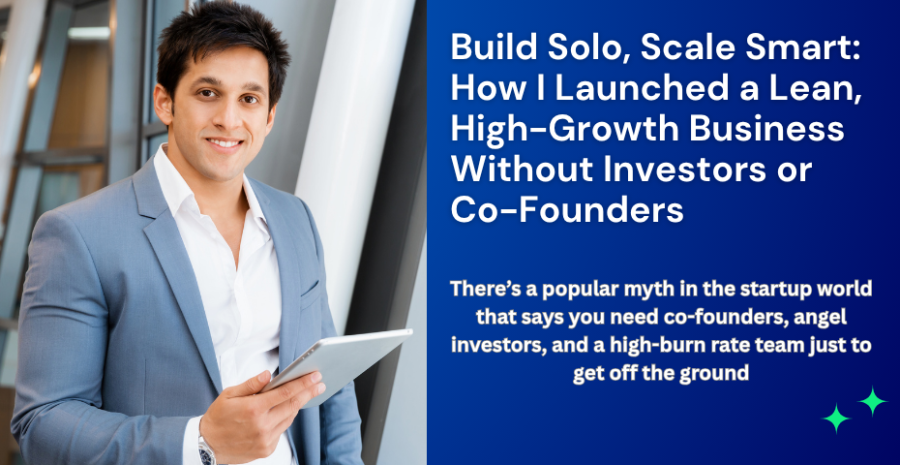
Introduction: Why I Chose to Go Solo — And Would Do It Again Without Hesitation
There’s a popular myth in the startup world that says you need co-founders, angel investors, and a high-burn rate team just to get off the ground. And it’s just that—a myth. While accelerators push pitch decks, and founders parade their funding rounds on LinkedIn, very few talk about the downside of giving away control too early or being chained to the wrong partner.
I saw the stories, watched friends compromise their ideas, and knew in my gut I didn’t want that. I wasn’t building a business for ego points or external validation. I wanted something lean, profitable, and scalable—something that would thrive not just in a hype cycle but in the real world. And to build that, I had to go all in. Alone.
I didn’t need a co-founder whispering doubts or second-guessing a bold decision. I didn’t want to dilute my vision by chasing investors who only believed in trends, not traction. I wanted to move fast, build systems that scaled, and make my own rules. Sure, solo founder life is hard.
You own the wins and the failures—but you also own the direction. You don’t wait for permission. You just build. I bootstrapped everything—every feature, every product launch, every system—and now I run a scalable business without giving up control, equity, or my sanity.
The world says building alone is risky. I say, what’s riskier than handing your vision to someone who doesn’t believe in it like you do?
This blog breaks down exactly how I made it happen. From clarity of vision to automation, from customer obsession to keeping things quiet while scaling big—I’ll show you why building solo isn’t a weakness, it’s a superpower.
Here are the eight core principles that helped me build a lean, scalable business completely on my own terms—and why I still wouldn’t change a thing.
1. I Chose Vision Over Validation

From the very beginning, I knew that clarity would be my greatest advantage. Most founders waste months seeking validation—from mentors, co-founders, investors, friends—before they ever launch anything. But validation is overrated.
Execution matters more. I had a clear vision: create products that solve real problems quietly and efficiently, without hype or noise. That clarity allowed me to act decisively, without waiting for others to catch up. When you're building solo, vision is your compass.
It keeps you anchored through the chaos and focused when doubts creep in. I didn’t need someone to “believe” in me to start; I needed to believe in the market opportunity, trust myself, and get to work.
I built a face recognition product before it was cool, because I saw where the trend was going.
I launched a delivery ecosystem that made sense long before gig economy apps became oversaturated. When you don’t dilute your vision with a dozen conflicting opinions, you can move faster and deeper—and that’s where the edge is.
Most founders confuse feedback with progress. I learned that clarity beats consensus—every time.
2. I Built Systems That Replaced People
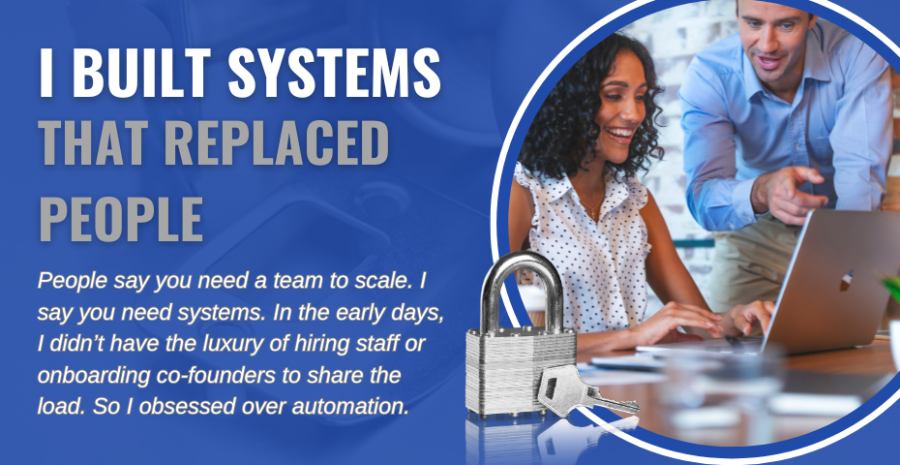
People say you need a team to scale. I say you need systems. In the early days, I didn’t have the luxury of hiring staff or onboarding co-founders to share the load. So I obsessed over automation.
Every repetitive process—customer onboarding, email responses, internal workflows—I turned into a repeatable, scalable system. I used no-code tools, AI integrations, and automation platforms like Zapier and Make to create backend operations that ran without my daily input.
Instead of spending hours on admin work, I spent minutes. And I reinvested that time into growth and product development. When you treat your solo business like a machine that needs optimization, not a role that needs delegation, you start to see compound results.
I replaced a customer support rep with a self-serve knowledge base. I swapped out a project manager with a Kanban system and automated reporting. Systems scale.
People often don’t—especially if you don’t have the infrastructure to support them. I built once and let the system run 24/7 while I slept.
That’s the kind of scale you can only achieve when you build for leverage, not just labor.
3. I Stayed Small to Move Fast
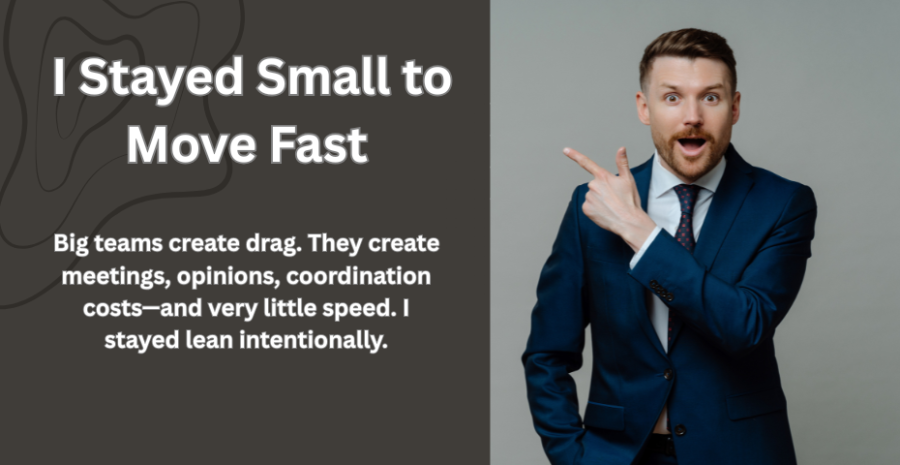
Big teams create drag. They create meetings, opinions, coordination costs—and very little speed. I stayed lean intentionally.
That meant no bloated roadmaps, no team standups, no slow decision cycles. Every idea went from concept to execution without needing group buy-in. When a customer requested a feature, I didn’t schedule a sprint—I built it in a weekend and deployed Monday.
Staying small gave me agility. I could test quickly, adapt instantly, and move forward without getting bogged down in politics or process. Solo builders don’t need bureaucracy—they need momentum.
Every day was about progress. I focused only on activities that moved the needle: shipping, acquiring, converting, retaining. The rest? I either cut or automated.
You don’t need 10 people to build a product—you need focus and follow-through. Most bloated startups slow themselves to death.
I did the opposite. I stayed nimble, and as a result, I outpaced competitors twice my size.
Speed is a weapon, and staying small let me wield it effectively.
4. I Focused on Profitable Products, Not Vanity Metrics
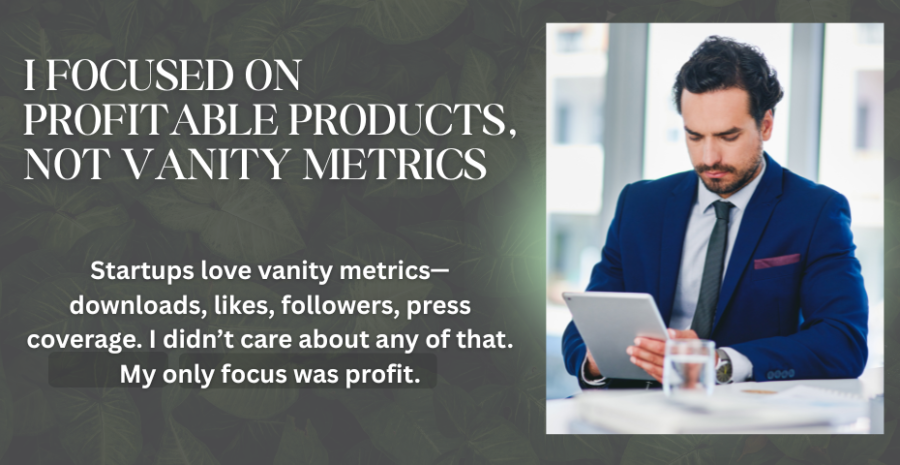
Startups love vanity metrics—downloads, likes, followers, press coverage. I didn’t care about any of that. My only focus was profit.
From day one, I asked: will this generate revenue? Will this reduce cost? Will this improve lifetime value? If the answer wasn’t yes, I didn’t build it.
My products were designed with monetization in mind—clear value, simple pricing, and scalable delivery.
I didn’t chase hype; I chased sustainable demand.
Because I wasn’t beholden to investors, I didn’t need to fake growth to raise a round.
I just needed to solve real problems well and get paid for it. Every dollar in was reinvested.
Every customer became a case study. I didn’t need a huge user base—I needed the right users who’d stick, refer, and pay.
That’s the beauty of going solo: no one’s pushing you to “scale at all costs.” You get to build a real business—not just a pretty pitch deck.
5. I Controlled My Time and Energy Like a CEO
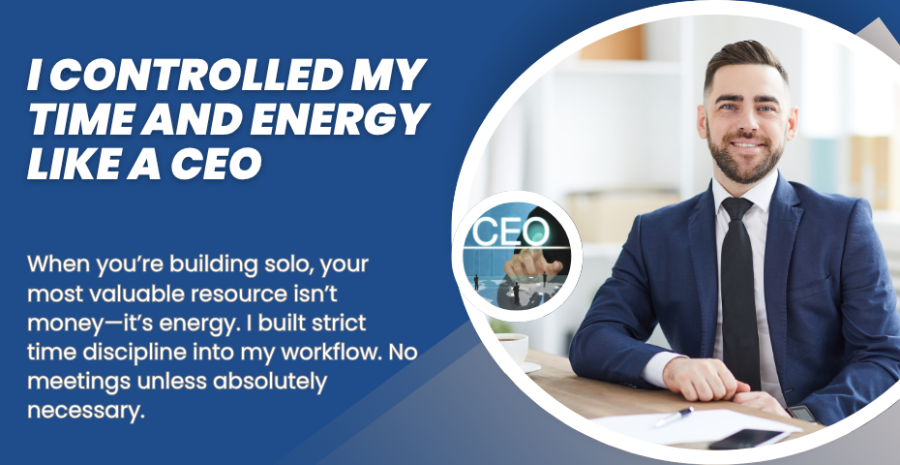
When you’re building solo, your most valuable resource isn’t money—it’s energy. I built strict time discipline into my workflow. No meetings unless absolutely necessary.
No scrolling during deep work blocks. I created rituals that helped me enter flow state fast: morning planning, blocked hours, single-task focus.
Because I didn’t have to coordinate with co-founders or teams, I could protect my cognitive bandwidth and use it where it mattered—creative problem solving, writing copy, optimizing funnels, coding features.
Most solo founders burn out because they’re reactive. I built proactively. My schedule was designed to maximize output, not effort.
That’s how I stayed consistent over years—not just weeks.
I worked on my business, not in it. And that gave me the long-term stamina to survive and thrive.
6. I Turned Customers into Collaborators
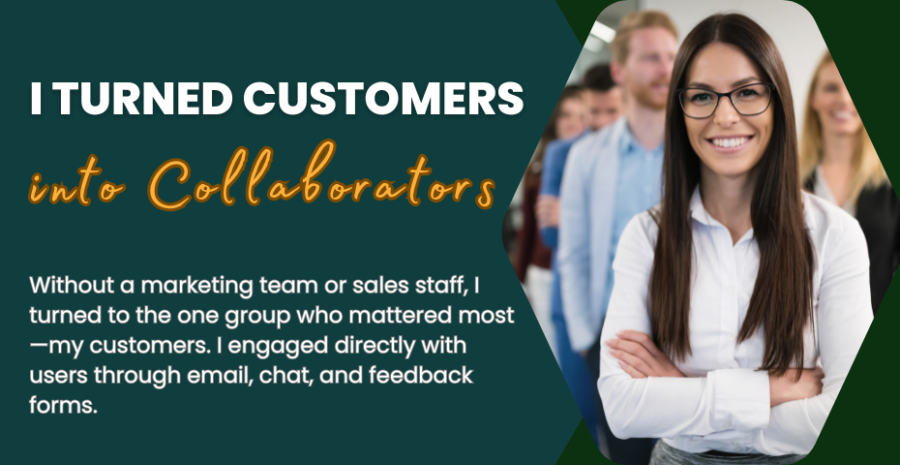
Without a marketing team or sales staff, I turned to the one group who mattered most—my customers. I engaged directly with users through email, chat, and feedback forms.
Every complaint became a feature request. Every compliment became a testimonial. I made customers feel heard, and in return, they stuck around.
They told friends. They became beta testers and advocates. I didn’t need a PR firm—I had real users singing my praises.
This approach not only improved my product; it built trust. In a world of scripted branding and impersonal support, being human wins.
I didn’t hide behind a “support@” inbox—I signed messages with my name. I showed up. I listened.
And I delivered fast. That level of service doesn’t scale with large teams, but when you’re solo and lean, it becomes a superpower.
People remember how you make them feel—and I made them feel valued.
7. I Ignored the Noise and Trusted the Process
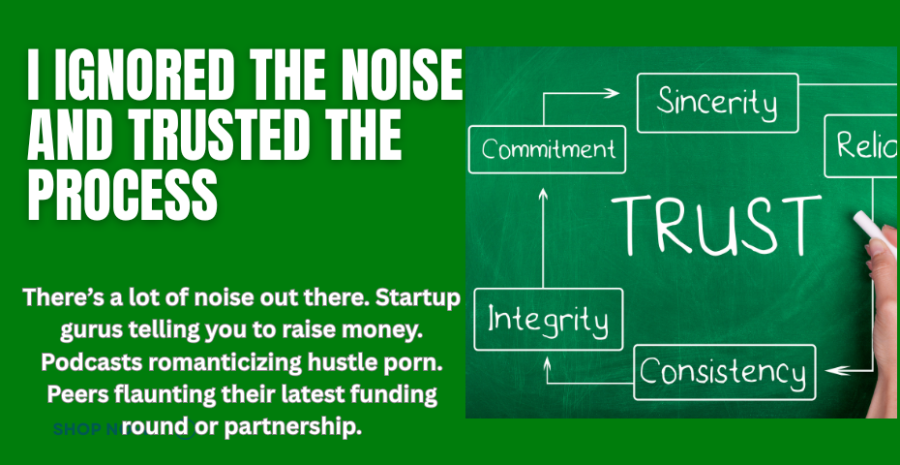
There’s a lot of noise out there. Startup gurus telling you to raise money. Podcasts romanticizing hustle porn. Peers flaunting their latest funding round or partnership.
I shut all of it out. My focus was the work. I had a process: ship, listen, improve, repeat. I didn’t chase shiny objects or overanalyze competitors.
I knew my strengths, and I stayed in my lane. The key was consistency—not chasing perfection or virality, just showing up every day and improving by 1%.
That discipline turned into momentum. That momentum turned into results. Every week, the product got better.
Every month, the revenue climbed. Every quarter, I was further ahead—quietly compounding while others chased trends. The best builders are often the quietest.
They let the work speak. I didn’t need hype—I needed habits. And I stuck to them religiously.
8. I Kept Ownership, Autonomy, and Optionality
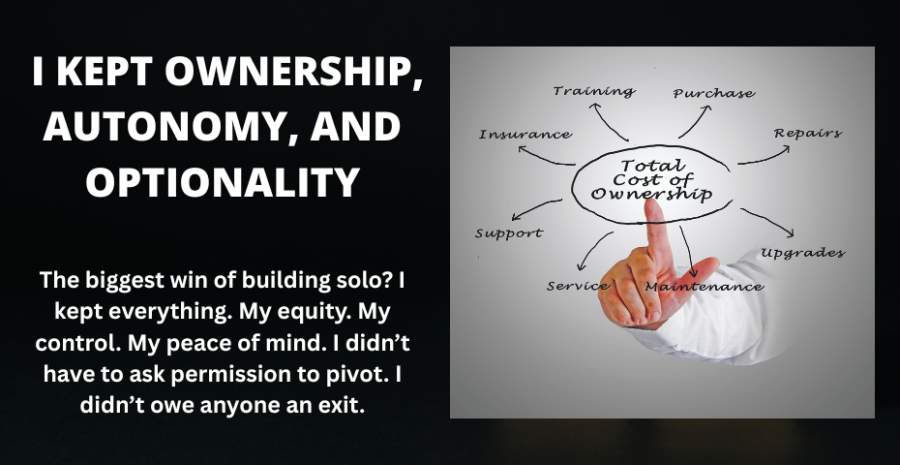
The biggest win of building solo? I kept everything. My equity. My control. My peace of mind. I didn’t have to ask permission to pivot. I didn’t owe anyone an exit.
I could grow slow or fast, double down or pause, without pressure. That autonomy gave me freedom most founders never taste. It let me optimize for what mattered—not what looked good on paper.
I didn’t burn out chasing artificial deadlines. I didn’t answer to a board or investors. I answered to my users, my vision, and myself.
That clarity of ownership created leverage—and it’s that leverage that turned a solo hustle into a real, scalable business.
You don’t need millions in funding to win. You need clarity, commitment, and control.
And that’s exactly what I got by building alone.
Conclusion: Build Solo, Build Smart, Build Free
Choosing to go solo was never about ego—it was about efficiency, clarity, and conviction. I wasn’t interested in playing startup theater.
I was building something real. And I did it by trusting myself, optimizing systems, obsessing over customers, and blocking out the noise. Most people think they need co-founders to fill gaps or investors to feel legitimate.
But when you strip that away, what remains is your ability to execute—and that’s what really matters. Going solo taught me discipline, resilience, and how to build something that not only works but thrives on my terms.
This isn’t about being anti-team or anti-capital—it’s about being pro-founder. Your idea doesn’t need permission. It needs commitment. If you’re tired of pitching, waiting, or explaining—just build.
Start small, think clearly, and systemize everything. When you own your vision, your time, and your results, you build faster and smarter. You’re not slower alone—you’re sharper. And if you can scale solo, you can scale anything.
So forget the fundraising, the startup circles, and the investor slide decks. If you’ve got vision, systems, and the courage to go all in—build it your way. That’s exactly what I did.
And even now, I wouldn’t change a thing.
Your time to thrive is now. One step at a time.

About: Andries vanTonder (66)
Over 46 years selfemployed
He is a Serial Entrepreneur, an Enthusiastic supporter of Blockchain Technology and a Cryptocurrency Investor
Find me: Markethive Profile Page | My Twitter Account | My Instagram Acount | and my Facebook Profile.






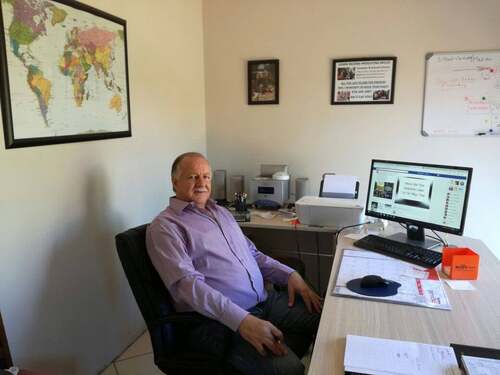

.png)
.gif)

